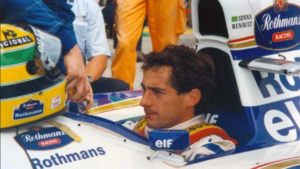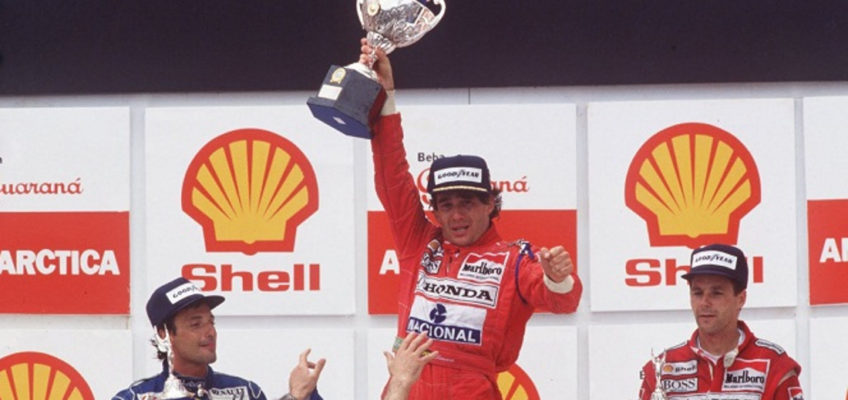Yesterday was the 25th anniversary of Ayrton Senna death at the San Marino Grand Prix of 1994. The outdated and dangerous Enzo and Dino Ferrari Circuit in Ímola (Italy), was the backdrop to one of Formula 1’s darkest weekends.
Only the day before the death of the three-time Brazilian world champion, the Austrian driver Roland Ratzenberger would also lose his life at the fateful circuit.
A racer nicknamed ‘Magic’ for his incredible style of driving at the wheel of any single car and who starred in several of the best races in history and amazing overtakes. This was Arton Senna da Silva, a god of speed, invincible fighting for the pole and for the champagne.
A necessary win at Ímola
Ayrton Senna arrived at that third race of the season eager to change the course of things having had to retire in the two previous appointments which were won by a young boy named Michael Schumacher.
An expensive signing for Williams, he was desperate to win. His English car (the FW16), however, had turned out to be an unstable and temperamental machine. On more than one occasion Senna had complained about its unpredictability.

The ban on electronic aids had transformed the invincible FW16, into a wild beast. On top of that, the cabin was too narrow for Senna’s body.
Aryton’s compatriot and protege Rubens Barrichello suffered a brutal collision on Friday’s practice session after his vehicle took off several meters from the asphalt and collided head-on with the fencing. Fortunately, the young driver suffered only minor injuries.

On the day after, Roland Ratzenberger suffered his fatal accident during the qualifying session. Senna, shocked and consternated, expressed the need to suspend the race, after considering the safety of the circuit to be deficient. He was not listened to.
The premonition of Gerhard Berger
A few years earlier, Ayrton Senna had visited the Ímola circuit accompanied by Gerhard Berger. In 1989, the driver from Salzburg had suffered a terrifying accident at the Tamburello bend.
Both drivers commented on the possibility of pushing the wall around the curve backwards for increased safety, widening the existing space between the track and the concrete wall.
After inspecting the area, however, they found that a creek running behind the wall prevented the possible work. Berger, unaware of the premonitory value of his words, told Ayrton Senna he was convinced that one day someone would lose his life at that point.
Ayrton Senna’s doubts
Senna was in shock after Ratzenberger death and confessed his fears to Sid Watkins, F1 doctor and personal friend. He had a bad feeling about that race. Watkins urged him to retire from Formula 1 as he himself was planning to do and reminded him he had nothing to prove to anyone.

Senna was still worried. Before going to bed the night before the race he phoned both his mother and his girlfriend and told them about his concerns. Both asked him not to take part in the race. Senna, however, felt obliged to compete. As he usually did, he read a passage from the Bible and fell asleep surrounded by his fears.
The tragic day
In that state of mind and more tense than usual, Ayrton Senna took the start from the first place on the grid. As soon as the green lights went off there was a brutal collision between two cars, triggering a safety car, a Fiat Tempra!

The squad commanded by Ayrton Senna continued at a very low speed for several laps behind it. The drivers complained about this over the radio, since they felt tire grip was compromised due to the temperature drop of the rubber.
The race was restarted at 14:17 (Central European time) until, on the seventh lap, something unexpected happened. The blue and white car didn’t take the Tamburello bend, continuing straight and into immortality.
Ayrton Senna’s heart officially stopped beating at 6:40 pm at the Maggiore hospital in Bologna where he had been transferred by helicopter. One of the most important figures of all time in motorsports had gone.
The news shocked Brazil where he was considered a national idol. Ayrton Senna was famous for waving his national flag after each victory, and he had reached deep into the hearts of his countrymen at a time when they were plunged in a very serious economic and social crisis.
Ayrton Senna’s F1 trajectory
During the eleven seasons that Ayrton spent in Formula 1, he competed for the Toleman, Lotus, McLaren and Williams teams. He took part in a total of 161 Grand Prix, obtaining 41 victories (25.47%), 65 pole positions (40.37%), 19 fastest laps (11.80%) and 80 podiums (49.69%). He became World Champion in 1988, 1990 and 1991 with the Woking team.
” ]It was not only his achievements but Senna’s own driving style that left an indelible mark. Endowed with indisputable natural talent, he starred in some of the most skilful manoeuvres of Formula 1.
He was particularly praised by his skills on the wet. Able to brake later and run faster than the rest, he seemed to defy the laws of Physics. He was passionate and ambitious, as his own words exemplify: “The second is the first of the losers.”
In a track as demanding as Monaco, Senna, faster and more precise than anyone, set a yet unbeaten record of six victories. Whereas a fierce competitor on the track, he was a sensitive and generous individual outside it.
Always willing to help the most disadvantaged, he won the hearts of his fellow Brazilians: “I cannot live on an island of wealth surrounded by a sea of poverty.” For all this, thousands of fans remember him today, a quarter century after his death.





Leave a Reply